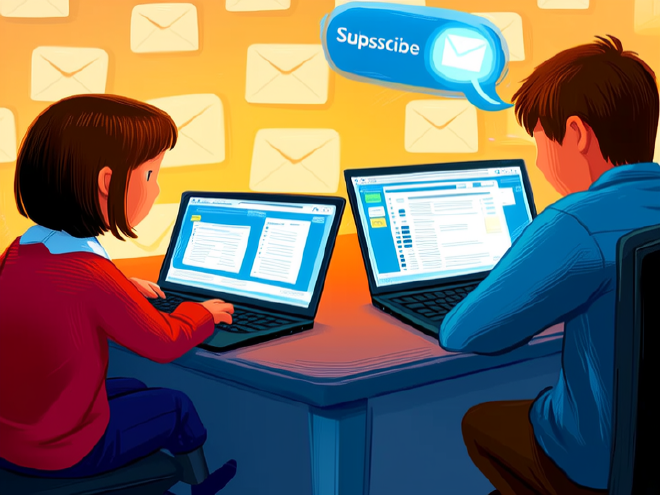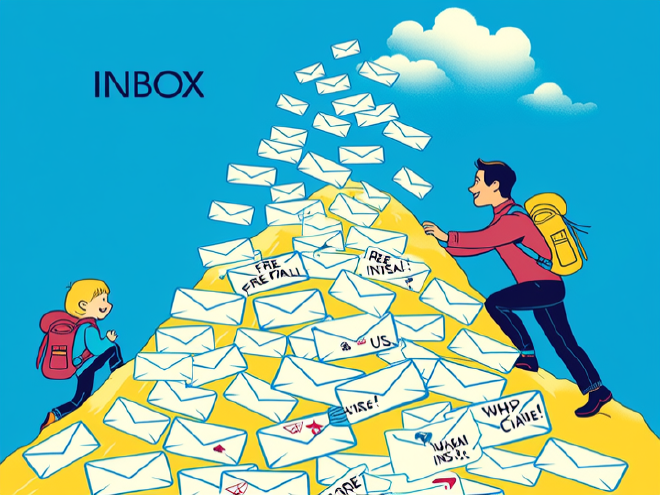- Change Log/
- Tips/
- Email Marketing in the Education Industry: How to Effectively Attract Students and Parents/
Email Marketing in the Education Industry: How to Effectively Attract Students and Parents
Table of Contents
Email Marketing in the Education Industry: How to Effectively Attract Students and Parents #
Introduction: The Potential of Email Marketing in the Education Sector #
In today’s increasingly competitive education market, attracting students to enroll and building trust and engagement with parents are challenges every educational institution must face. Email marketing, as one of the cost-effective and high-conversion tools in digital marketing, is gradually becoming a key strategy for enrollment and brand building in the education industry.
However, many educational institutions still remain at the level of “broadcasting notifications” when implementing email marketing, neglecting the importance of personalization, precise targeting, and content value. This article will delve into how the education sector can use email marketing to attract students and parents, providing practical advice from strategy formulation to content optimization, helping you improve enrollment conversion rates and brand influence.

I. Clarifying Objectives: The Core Value of Email Marketing in the Education Industry #
Before formulating an email marketing strategy, educational institutions first need to clarify their objectives. Different audiences (students vs. parents) and stages (enrollment promotion vs. home-school communication) determine the differences in email content and style.
Three Core Objectives of Educational Email Marketing: #
- Attracting Student Enrollment: By showcasing course advantages, faculty strength, and success stories, inspire potential students’ interest.
- Building Parental Trust: Providing transparent information, teaching achievements, and communication channels to establish parental trust in the institution.
- Maintaining Long-term Relationships: Continuously staying connected with existing parents and students to enhance repeat purchases and word-of-mouth referrals.
II. Building a Precise Email Audience List: Improving Conversion Rates from the Source #
Successful email marketing hinges on precise audience targeting. Educational institutions should collect potential user data from multiple sources and categorize them based on user profiles.
Suggestions for Email Audience Sources: #
- Website registered users
- Social media followers
- Participants in offline events
- Existing student parents
- Potential customers who have filled out forms
Data Management Techniques: #
- Use CRM systems to categorize users by labels (e.g., grade, interest, course preference)
- Set up automated trigger emails (e.g., automatically send welcome emails after registration)
- Regularly clean invalid or inactive email addresses to improve email deliverability
III. Designing High-Converting Email Content: Personalization is Key #
In an era of information overload, only personalized and valuable content can truly resonate with students and parents. Educational institutions should develop differentiated email content strategies based on the needs of different audiences.

1. For Students: Highlight Course Highlights and Growth Opportunities #
-
Subject Line Suggestions:
- “Limited-Time Offer for Your Favorite Coding Course!”
- “5 Practical Tips to Improve Your English Speaking Skills, Master Them Now!”
-
Content Points:
- Showcase course features and learning outcomes
- Provide free trial links or learning resources
- Use student testimonials or success stories to enhance persuasiveness
2. For Parents: Emphasize Teaching Quality and Safety Assurance #
-
Subject Line Suggestions:
- “Why We Are Your Child’s Most Trusted After-School Tutoring Provider?”
- “Parents Must Read: How to Choose a Reliable After-School Training Institution?”
-
Content Points:
- Introduce teaching staff and educational philosophy
- Show student progress data and parent feedback
- Provide safety measures and explanations of the teaching environment
3. Content Format Suggestions: #
- Concise and clear text + clear layout
- Embed video introductions or trial course links
- Add social sharing buttons to encourage forwarding and spreading
IV. Optimizing Email Sending Strategies: Timing and Frequency Are Equally Important #
Even if the content is excellent, sending emails at inappropriate times may result in them being ignored or mistaken as spam. Therefore, a scientific sending strategy is a key component in improving email marketing effectiveness.
Sending Time Suggestions: #
- Parent Group: Weekdays evenings or weekend mornings (e.g., 6:00 PM - 8:00 PM)
- Student Group: After school or daytime weekends (e.g., 4:00 PM - 6:00 PM)
Controlling Sending Frequency: #
- Welcome series emails for new users: Send consecutively for 3 days
- Enrollment promotion emails: Send 2-3 times per month
- Home-school communication emails: Send regularly according to course progress (e.g., weekly/monthly)
Tip: Use A/B testing for different time slots and subject lines to continuously optimize open rates and click-through rates.
V. Enhancing Email Engagement: Guiding Users to Take Next Steps #
A successful email not only needs to be attractive but also needs to guide users to take action. Whether it’s clicking links, filling out forms, or making phone calls, clear CTAs (Call-to-Action) are required.
CTA Design Techniques: #
- Use action-oriented language (e.g., “Enroll Now,” “Free Trial,” “Learn More”)
- Set prominent button or link positions
- Provide limited-time offers or exclusive benefits to enhance urgency
Common CTA Scenario Examples: #
| Scenario | CTA Suggestions |
|---|---|
| New User Registration | “Click to Receive Free Trial Class” |
| Parent Communication | “Schedule a One-on-One Education Consultant Appointment” |
| Course Promotion | “First 50 Enrollments Enjoy Early Bird Pricing” |
VI. Continuous Optimization and Data Analysis: Making Email Marketing More Scientific #
Email marketing is not a one-time task but rather an ongoing optimization process. Through data analysis, educational institutions can continuously adjust strategies to improve conversion effectiveness.
Key Data Metrics Suggestions: #
- Open Rate: Reflects the attractiveness of email subject lines and senders
- Click-Through Rate (CTR): Measures the effectiveness of content and CTAs
- Conversion Rate: Final enrollment or consultation ratio
- Unsubscribe Rate: Determines whether content meets user expectations
Recommended Tools: #
- Professional email platforms such as Mailchimp, HubSpot, ConvertKit
- Google Analytics to track email-driven traffic
- CRM systems to integrate user behavior data
Conclusion: Email Marketing Is an Undeniable Growth Engine for the Education Industry #
In today’s rapidly accelerating digital transformation, email marketing has become an important tool for the education industry to achieve efficient enrollment and home-school communication. By precisely targeting audiences, personalizing content, employing scientific sending strategies, and continuously optimizing, educational institutions can not only enhance brand influence but also achieve higher conversion rates and user retention.
Call to Action:
If you’re looking for ways to improve enrollment efficiency, start developing a systematic email marketing plan today. Begin with small-scale tests, gradually optimize content and strategies, and you’ll surely see significant results.
Start your education email marketing journey now and attract more students and parents’ attention!
Tags: Education Marketing, Email Marketing, Enrollment Strategy